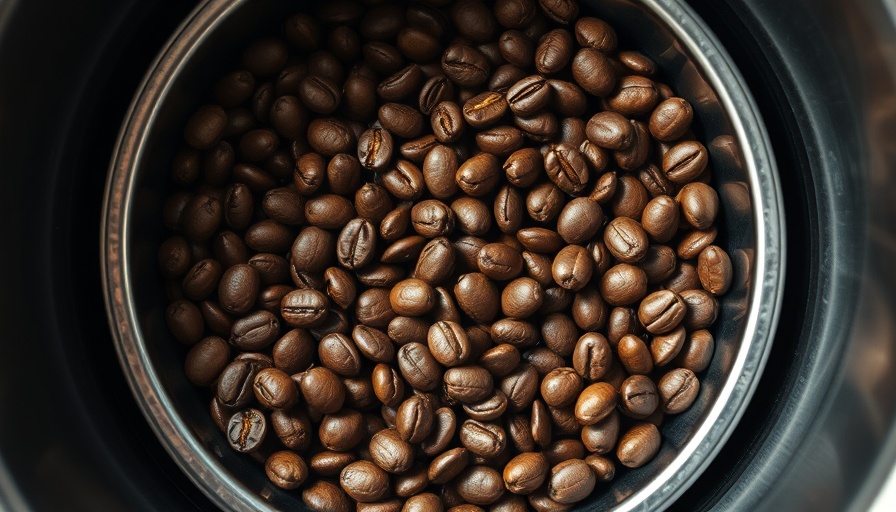
Understanding Coffee Roast Levels: A Flavor Journey
Coffee is more than just a morning ritual; it's an experience shaped by factors like roast level, which drastically affects flavor and aroma. Familiarizing yourself with the differences between light, medium, and dark roasts can elevate your coffee choice to new heights. Light roasts, for instance, are known for their vibrant acidity and fruity notes, allowing the genuine characteristics of the bean to shine through. In contrast, dark roasts offer a full-bodied experience, rich in bittersweet flavors that are perfect for those who prefer a more intense coffee profile.
How Roasting Transforms Coffee Beans
The roasting process is critical, as it unlocks flavors inherent in coffee beans—initially green and grassy before they are transformed by heat. During roasting, the beans undergo several phases: drying, browning, and developing, each crucial for flavor development. The transition from dry green beans to the aromatic brown variety we adore occurs through a delicate balance of time and temperature.
Why Your Coffee Taste Matters
Exploring different roasts not only satisfies your curiosity about flavor but also helps you find a brew that resonates with your taste. For health enthusiasts, knowing the difference in caffeine content can also make a significant difference—light roasts tend to maintain slightly more caffeine than their darker counterparts, although the difference may seem minimal.
The Role of Roast Profile in Flavor Development
Each roaster backs their craft with unique profiles that dictate the final taste experience. Variables such as time and temperature allow them to highlight specific flavor notes, so the same beans can take on different profiles from subtle to bold, enriching your morning joe. For instance, a lightly roasted bean generally delivers fruity undertones, while a darker roast might present a smoky essence, showing how flexibly we can interpret the humble coffee bean.
Choosing Your Perfect Brew
Ultimately, the roast you choose should reflect your preferences. If you crave a bright, vibrant flavor, light roast is likely right for you. Conversely, if you relish a bold, robust coffee experience, opt for the dark roast. Exploring these differences contributes not only to your personal enjoyment but also promotes informed consumption suited to your health and tastes.
Whether you're new to the coffee world or a seasoned connoisseur, understanding how roast levels affect coffee taste can significantly enrich your coffee-drinking experience. Next time you're at your local coffee shop, step out of your comfort zone and explore the options—your taste buds will thank you!
 Add Row
Add Row  Add
Add 




 Add Row
Add Row  Add
Add 



Write A Comment